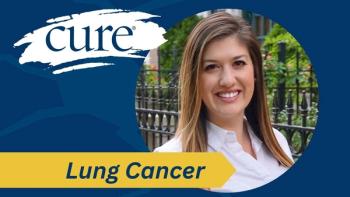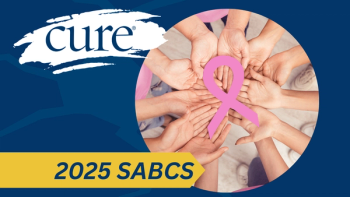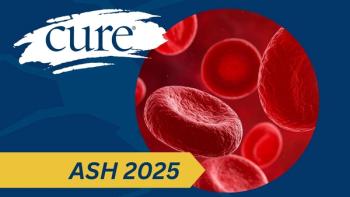Aidixi (disitamab vedotin), an antibody-drug conjugate (ADC) combined with Bacillus Calmette-Guérin (BCG) led to positive efficacy with a manageable safety profile in patients with HER2-expressing, high-risk non–muscle-invasive blader cancer (HR-NMIBC), according to results from a small study shared during the 2025 American Urological Association (AUA) Annual Meeting.
Among patients who were unable to undergo complete tumor resection or had carcinoma in situ (CIS), the clinical complete response (cCR) rates were both 100% for 11 patients evaluable at three months and five patients evaluable at six months. Further, in the three evaluable patients who underwent complete tumor resection, the event-free survival (EFS) rate at six months was 100%.
Regarding safety, 65% (13 patients) of patients experienced any-grade treatment-related side effects (TRAEs). These included elevated aspartate aminotransferase/alanine aminotransferase (40%; 8 patients), alopecia (45%; 9 patients), peripheral sensory neuropathy (35%; 7 patients), anorexia (10%; 2 patients) and rash (5%; 1 patient). BCG-related side effects were experienced by 60% (12 patients) of patients and included bladder irritation, fever, arthralgia, conjunctivitis, and hematuria. Only two patients (10%) experienced grade 3 (severe) TRAEs: one patient had grade 3 peripheral sensory neuropathy related to Aidixi and one patient had grade 3 hematuria related to BCG.
Glossary:
Clinical complete response (cCR): when no signs of cancer are found on medical tests after treatment.
Duration of complete response: how long the cancer remains undetectable after a complete response is achieved.
Event-free survival (EFS): the length of time after treatment that a patient remains free from cancer-related problems like recurrence or progression.
Cancer-specific survival: the percentage of patients who have not died from their cancer over a certain period of time.
Overall survival: the percentage of patients who are still alive for a certain period of time after treatment, regardless of cause of death.
Peripheral sensory neuropathy: nerve damage that causes numbness, tingling or pain, often in the hands and feet.
Anorexia: a loss of appetite caused by illness or treatment, not the eating disorder.
Hematuria: blood in the urine.
“[Aidixi] plus BCG may potentially provide a new bladder-sparing therapy for very high-risk NMIBC patients with HER2 expression who refused radical cystectomy or did not meeting the requirements for radical cystectomy,” Dr. Yijun Shen, department of Urology, Fudan University Shanghai Cancer Center, Shanghai, China, said when presenting the data at the AUA meeting.
Study Background and Patient Characteristics
Explaining the rationale for the study, Shen said, “Forty percent to 60% of patients with HR-NMIBC will relapse after BCG treatment. Moreover, there is a high incidence of postoperative complications and a negative impact on health-related quality of life after radical cystectomy.”
Overall, the study included 20 patients with HER2-expressing, high-risk NMIBC. Patients were stratified into two cohorts: cohort A consisted of 15 patients with residual tumor or CIS following transurethral resection of bladder tumor (TURBT) and cohort B comprised five patients without residual tumor following TURBT.
In cohort A, the patient age range was 55 to 83 years. There were 13 men and two women, and NMIBC was the primary tumor for 12 of the 15 patients. One patient had a tumor stage of Ta and all other patients had a tumor stage of T1. All patients had multiple lesions and 12 patients had CIS. HER2 expression scores per IHC comprised three patients who were 1+, eight who were 2+, and four who were 3+. Twelve patients had residual tumors at second transurethral resection (TUR).
Patients in cohort B had an age range of 62 to 78 years. There were three males and two females and NMIBC was the primary tumor for all five patients. Across all patients, NMIBC was the primary tumor, and the tumor stage was T1. Four patients had multiple lesions and none of the patients had concurrent CIS or residual tumors at second TUR. HER2 expression by IHC was 2+ for three patients and 3+ for two patients.
All patients were treated with Aidixi at 2 milligrams per kilogram every three weeks for up to 8 cycles. This was followed by one-year of BCG bladder instillation.
The primary end points were three-month CR rate for cohort A and six-month EFS rate for cohort B. Secondary end points for both cohorts were six- and 12-month CR rates, duration of CR, one- and two-year EFS rates, one- and two-year cancer-specific survival rates, overall survival and safety.
Reference:
“Preliminary efficacy and safety of Aidixi (dv) combined with Bacillus Calmette-Guérin (BCG) in the treatment of high-risk non-muscle invasive bladder cancer with HER2 expression: a prospective, open label, single-center study,” by Dr. Shen Y, et al. J Urol.
For more news on cancer updates, research and education, don’t forget to subscribe to CURE®’s newsletters here.





